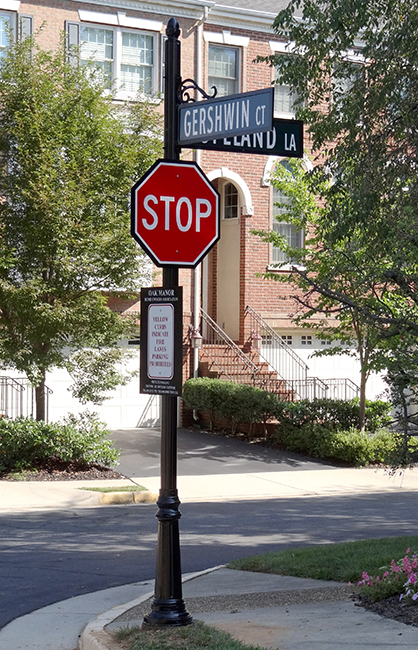The History of Street Signs And How They Improve Our Nation's Transportation Infrastructure
Friday January 11, 2019Regardless of where you live in the United States, there are probably street signs present. Whether it's a major Interstate Highway or a small street running through a residential community, all roads have signs to safely dictate the flow of traffic. They've been around for over a century, and while the Federal Highway Administration (FHWA) has enacted new regulations regarding their use and design since then, the basic purpose of road signs remains the same.

Origins of the Stop Sign
One of the first road signs to appear in the United States was the stop sign. During the early 19th century, the U.S. transportation infrastructure consisted mostly of dirt roads with few or no signs. This wasn't a problem a first because most people still walked or rode a bicycle. As our nation's roads became congested with vehicles, though, automobile-related injuries and fatalities began to skyrocket. Therefore, government officials sought to investigate a standardized system for using and designing road signs, eventually leading to the development of the modern-day stop sign.
In 1915, the country's first stop sign was mounted in Detroit, Michigan. At the time, government officials thought yellow was the best color for stop signs due to its highly reflective properties. Fast forward to the 1920s, however, and stop signs became red.
The Standardization of Road Sign Colors
Since the 1920s, all stop signs in the United States have remained red. Officials with the FHWA concurred that red street signs should direct drivers to stop, yield or not to enter a specific road or area. In comparison, orange street signs are used to inform drivers about ongoing roadwork. According to the Centers for Disease Control and Prevention (CDC), more than 1,500 workers were killed while performing roadside construction from 2003 to 2015. Prior to this period, fatality rates among roadside construction workers was even higher due to lax road sign standards. By adopting orange as the standard color for roadside work signs, government officials were able to reduce these numbers.
The Standardization of Road Sign Shapes
In addition to colors, government officials also standardized the shape of road signs to create a safer and more efficient transportation infrastructure. Diamond, for example, indicates a warning, such as yield ahead or rough road. Octagon-shaped road signs, on the other hand, are used specifically for stop signs. There are also pentagon-shaped road signs that indicate a school zone.
Colors and shapes are just two of many ways in which road signs are standardized. The FHWA has published an entire manual regarding the design of use of road signs. Known as the Manual on Uniform Traffic Control Devices (MUTCD), it reveals everything that community developers and municipalities must know when using road signs.
About Forsite:
Welcome to Forsite! You’ve found your best source custom curbside mailboxes and cluster mailboxes. We manufacture and install upscale site amenities throughout the United States.
Forsite can provide you with everything for your Master Planned Community or Residential Development. You can create a uniform, upscale appearance and increase property values by "bundling" Forsite’s integrated package of fashionable and durable mailboxes, post and wall mounted lighting, street (way) signs monument and entry signage as well as the desired amenities such as Bollards, Benches, Litter Receptacles and Bike Racks.
You can count on the experts at Forsite to help improve the quality of your community today. Contact us today to get started by talking to one of our experienced team members at 855-537-0200.


